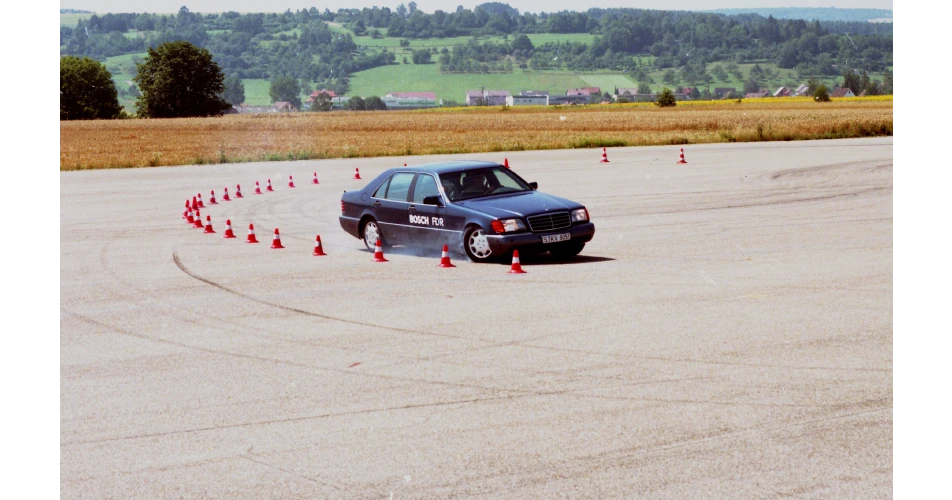It is a technology that is now used on 82% of new vehicles globally and it is estimated that it is a technology breakthrough that has saved some 15,000 lives. ESP, the electronic stability programme was first launched by Bosch and Daimler-Benz on the Mercedes S-class in 1995 and it has since gone on to be a life saving industry standard.
If you can remember pre ESP days, then you will know that driving in the wet held particular horrors. A sudden manoeuvre on a wet road could easily mean ending up in a ditch, or against a crash barrier with damage, injury or worse. Bosch and Daimler-Benz first introduced a solution to this problem 25 years ago and since then it has gone on to keep vehicles on track throughout the world.
Bosch accident researchers estimate that in the EU alone, the anti-skid system has saved some 15,000 lives over the past 25 years, as well as preventing just under half a million accidents involving personal injury. Together with the seatbelt and airbag, ESP is one of the most important life-savers in a vehicle.
Bosch board of management member Harald Kroeger says, “The development of the electronic stability programme was a milestone on the path to our ‘vision zero’ of no more road deaths. ESP is an outstanding example of what we mean by ‘Invented for life.” The innovation may be from 1995, but there is nothing dated about it. Bosch has continuously improved its anti-skid system, and produced more than 250 million ESP systems to date. Modern cars are inconceivable without this electronic guardian angel. Worldwide, 82 percent of all new vehicles are equipped with ESP®. In 2017, this figure was 64 percent.”
Especially when roads are wet or icy, when evading unexpected obstacles such as animals on the road, and also when driving into a bend too fast, the electronic stability programme intervenes. With ESP on board, up to 80 percent of all skidding accidents can be prevented. It combines the functions of the ABS antilock braking system and the TCS traction control system, but can do considerably more. It also detects vehicle skidding movements, and actively counteracts them.
The anti-skid system uses information about vehicle dynamics to detect whether the car is heading in the direction the driver is steering. If there is a discrepancy between these two factors, ESP intervenes. Smart sensors help compare steering angle and vehicle trajectory 25 times a second. If the two diverge, ESP reduces engine torque and brakes individual wheels. In this way, the system helps the driver prevent the vehicle from breaking away or skidding effectively nipping many accidents in the bud.
This technology has now gone on to be mandatory in most countries and experience from Europe shows that if the proportion of vehicles featuring the system rises, accident numbers fall.
Harald Kroeger comments, “ESP® has taken road safety to a new level and it has done so across a diverse range of vehicle types. Bosch offers customized ESP systems for all powertrain types, from combustion engines to electric motors, and for vehicles of all kinds, from micro cars to commercial vehicles. Even for motorized two-wheelers, the company has developed a kind of ESP.”
